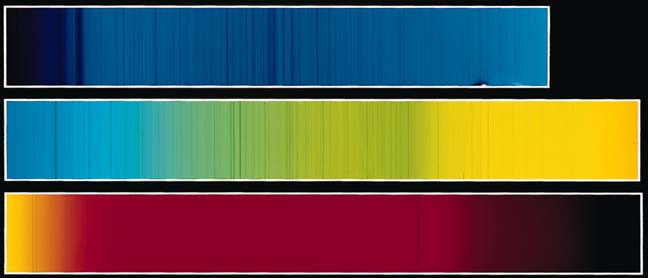
This allows measurement of the temperature gradient. Near the edge, light comes from higher up in the photosphere, where the temperature is lower and the radiation weaker. Temperatures in the photosphere usually do not exceed 6,000 C, 6,000. The density of the ionized gas is about 1/1,000 that of air at Earth’s surface, but it is much more opaque, because of strong absorption of light by the hydrogen ions.Ī low-resolution image of the photosphere shows little structure except for a darkening toward the outermost regions, called limb darkening. Englewood Cliffs, NJ: Pretice-Hall, 1986. The area of the Suns chromosphere that has the greatest temperature is the. The experiment was found to reliably determine photospheric temperature within 10 of the accepted value (5778 K), with an average (n 66) temperature of 6212 K (s 164 K, 7.5 average error), which we believe to be reasonable given that atmospheric effects are ignored, and that the sun is far more complex than a spherical blac. Photons generated deeper than this cannot get out without absorption and reemission. The maximum temperature of the Suns chromosphere is around 14,000 degrees Fahrenheit or 7,760 degrees Celsius.

The temperatures in this layer range from 4,400 kelvins (K 4,100 ☌, or 7,400 ☏) at the top to 10,000 K (9,700 ☌, or 17,500 ☏) at the bottom. The photosphere is thus a layer some 400 km (250 miles) thick. Scientists consider the “surface” of the Sun to be the region above which most photons (the quantum carriers of light energy) escape. Since the Sun is so far away, the edge of the photosphere appears sharp to the naked eye, but in reality the Sun has no surface, since it is too hot for matter to exist in anything but a plasma state-that is, as a gas composed of ionized atoms. Photosphere, visible surface of the Sun, from which is emitted most of the Sun’s light that reaches Earth directly. SpaceNext50 Britannica presents SpaceNext50, From the race to the Moon to space stewardship, we explore a wide range of subjects that feed our curiosity about space!.Learn about the major environmental problems facing our planet and what can be done about them! Saving Earth Britannica Presents Earth’s To-Do List for the 21st Century.Britannica Beyond We’ve created a new place where questions are at the center of learning.100 Women Britannica celebrates the centennial of the Nineteenth Amendment, highlighting suffragists and history-making politicians.
#Temperature of the photosphere of the sun how to#
COVID-19 Portal While this global health crisis continues to evolve, it can be useful to look to past pandemics to better understand how to respond today.Student Portal Britannica is the ultimate student resource for key school subjects like history, government, literature, and more. Read Laboratory Exercise 7 section 7.2a and answer questions 5-7.Demystified Videos In Demystified, Britannica has all the answers to your burning questions.This Time in History In these videos, find out what happened this month (or any month!) in history.#WTFact Videos In #WTFact Britannica shares some of the most bizarre facts we can find.The photosphere is the coolest layer of the Sun, with the temperature decreasing. Britannica Classics Check out these retro videos from Encyclopedia Britannica’s archives. By Stephans law, this corresponds to an effective temperature of 5755 K.Britannica Explains In these videos, Britannica explains a variety of topics and answers frequently asked questions.This texture is caused by the numerous convection cells within the underlying convection zone. The granulated, orange-peel like, appearance of the Sun originates from the photosphere.
#Temperature of the photosphere of the sun free#
When these magnetic field lines effectively break, the previously constrained material can burst free at high speeds in the form of solar flares. Sunspots arise when strong magnetic fields inhibit the hot plasma from rising up through the underlying convection zone. The temperatures in this layer range from 4,400 kelvins (K 4,100 C, or 7,400 F) at the top to 10,000 K (9,700 C, or 17,500 F) at the bottom. It looks mottled because the underlying convection produces a bubbling pattern: it contains rising plumes of hot gas, yellow and orange blobs, bright spots where hot gas is rising, and dark areas where cooler gas is sinking.

The photosphere is thus a layer some 400 km (250 miles) thick. The photosphere is the relatively cool and low-density gas cloud that makes up the Sun’s visible surface. The typical temperature of the photosphere is some 6000 oC, although relatively cool (4000 oC) regions known as sunspots are not uncommon. Scientists consider the surface of the Sun to be the region above which most photons (the quantum carriers of light energy) escape. It is only a few hundred kilometres thick. The photosphere is effectively the radial zone at which the density of ionised hydrogen atoms becomes low enough that the photons can escape unhindered. While the chromosphere resides above the photosphere, and, in turn, the corona envelopes the chromosphere, the density of the chromosphere and corona are so low that they are transparent. The photosphere is typically regarded as the surface of our Sun.


 0 kommentar(er)
0 kommentar(er)
